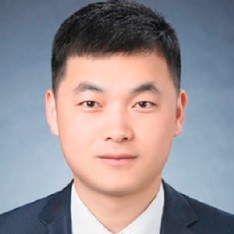Advanced Functional Materials for Energy Harvesting and Storage Devices
A special issue of Micromachines (ISSN 2072-666X). This special issue belongs to the section "D:Materials and Processing".
Deadline for manuscript submissions: closed (31 December 2022) | Viewed by 21568
Special Issue Editors
Interests: functional nanomaterials; flexible energy storage and conversion devices; supercapacitors; photocatalysis; electrocatalysis; nanogenerators
Special Issues, Collections and Topics in MDPI journals
Interests: functional nanomaterials; nanomaterial fabrication and characterization; carbon nanomaterials; energy conversion systems; supercapacitors; solar cell; nanogenerators
Interests: functional materials; energy storage and conversion systems; green catalytic materials
Interests: flexible energy harvesting and storage devices; triboelectric nanogenerators; supercapacitors
Special Issue Information
Dear colleagues,
Very recently, the fabrication of energy harvesting, storage, and conversion systems, including nanogenerators, supercapacitors, lithium-ion batteries, solar cells, photo/electro-catalysts, etc., has received remarkable attention. Furthermore, fabrication of energy harvesting, storage and conversion systems with flexible structures has, in recent years, become a hot research topic. Up to now, numerous researchers have utilized different functional materials including two-dimensional (2D) materials, MXenes, metal oxides, metal phosphides, metal sulfides, metal–organic framework, etc., as the active materials for energy harvesting, storage, and conversion systems. However, there are still many challenges to overcome, such as the low output voltage of piezoelectric nanogenerators, poor output current density of triboelectric nanogenerators, the poor power density of supercapacitors, poor cyclic stability of lithium-ion batteries, the low conversion efficiency of solar cells, and so on. Accordingly, this Special Issue seeks to showcase research papers and review articles that focus on novel developments in energy harvesting, storage, and conversion systems.
Topic of interest include but are not limited to:
- Triboelectric nanogenerators;
- Pyroelectric nanogenerators;
- Piezoelectric nanogenerators;
- Supercapacitors;
- Lithium-ion batteries;
- Solar cells.
We look forward to receiving your submissions!
Dr. Yongteng Qian
Dr. Viyada Harnchana
Dr. Hui Mao
Dr. Wen He
Guest Editors
Manuscript Submission Information
Manuscripts should be submitted online at www.mdpi.com by registering and logging in to this website. Once you are registered, click here to go to the submission form. Manuscripts can be submitted until the deadline. All submissions that pass pre-check are peer-reviewed. Accepted papers will be published continuously in the journal (as soon as accepted) and will be listed together on the special issue website. Research articles, review articles as well as short communications are invited. For planned papers, a title and short abstract (about 100 words) can be sent to the Editorial Office for announcement on this website.
Submitted manuscripts should not have been published previously, nor be under consideration for publication elsewhere (except conference proceedings papers). All manuscripts are thoroughly refereed through a single-blind peer-review process. A guide for authors and other relevant information for submission of manuscripts is available on the Instructions for Authors page. Micromachines is an international peer-reviewed open access monthly journal published by MDPI.
Please visit the Instructions for Authors page before submitting a manuscript. The Article Processing Charge (APC) for publication in this open access journal is 2600 CHF (Swiss Francs). Submitted papers should be well formatted and use good English. Authors may use MDPI's English editing service prior to publication or during author revisions.
Keywords
- functional materials
- energy harvesting devices
- energy storage and conversion devices
- flexible devices
Benefits of Publishing in a Special Issue
- Ease of navigation: Grouping papers by topic helps scholars navigate broad scope journals more efficiently.
- Greater discoverability: Special Issues support the reach and impact of scientific research. Articles in Special Issues are more discoverable and cited more frequently.
- Expansion of research network: Special Issues facilitate connections among authors, fostering scientific collaborations.
- External promotion: Articles in Special Issues are often promoted through the journal's social media, increasing their visibility.
- e-Book format: Special Issues with more than 10 articles can be published as dedicated e-books, ensuring wide and rapid dissemination.
Further information on MDPI's Special Issue polices can be found here.









